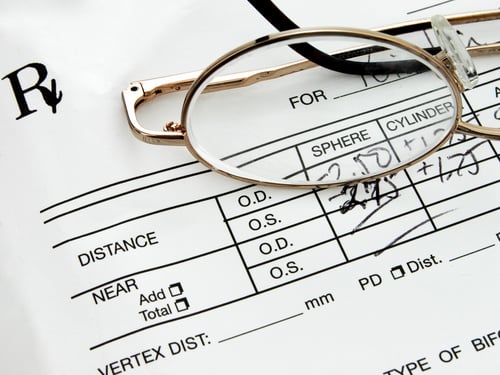Studies show that separate vision prescriptions are common in older adults.
It is no secret that our vision changes, and often becomes much more complicated, as we get older. Once you are over the age of 40, you become much more susceptible to common vision problems such as glaucoma, cataracts, age-related macular degeneration and a whole host of other possible senior vision ailments.
However, if these problems were not difficult enough to try and treat once you reach your golden years, new studies are suggesting that our vision prescription itself may begin to change between both eyes as we get older, meaning that we could actually have two different prescriptions.

The study, first reported in Optometry and Vision Science, the official journal of the American Academy of Optometry, shoes that anisometropia―the condition in which the two eyes have unequal refractive powers―is found in nearly one-third of people over the age of 75. In this study, researchers analyzed vision examination results in 118 older adults followed up on over a 12 year period, focusing specifically on the development of anisometropia. The average age of each adult ranged from 67 to 79 years at the end of the study.
During this research study, Anisometropia was defined as a significant difference (one diopter or more) in prescription (refractive error) between the two eyes in one of four components. It was found that, during the study period, the prevalence of anisometropia increased significantly among those examined. In fact, for each of the four prescription components, the prevalence of anisometropia doubled. As the participants further approached 80 years of age, 32% met the study definition of anisometropia.
Dr Gunilla Haegerstrom-Portnoy, OD, PhD, FAAO, of University of California, Berkeley, the leader of the study, and coauthors cite previous studies showing that the prevalence of anisometropia in children is only two to four percent. They write, “Whatever the cause of the increase in anisometropia with aging, the fact that significant anisometropia is at least ten times more common in those over 75 years of age than in children needs to be clearly emphasized to clinicians.”
The results of this study is even more potentially troublesome for seniors because of the results that anisometropia may have on senior health. Anthony Adams, OD, PhD, Editor-in-Chief of Optometry and Vision Science, comments: “For older people a lack of correction of this prescription difference between the eyes may contribute to the increased frequency of falls that, in turn, can have a severe impact on health and even life expectancy.”
Dr Adams also raised a special concern over the frequent use of “over-the-counter drugstore reading glasses” by older adults. He adds, “These ‘dime store readers’ are made to be generic, with identical focusing or magnification power in each eye—certainly not an ideal solution for at least 30 percent of the over-age-75 population who have differing visual requirements between eyes.”
Given this information, it is more important than ever that seniors over the age of 60 undergo regular eye examination to check for changes in their vision and take the proper steps to keep their vision as healthy and clear as possible going into their senior years. For more information about senior eye examinations, contact OCLI today.
Information: Source